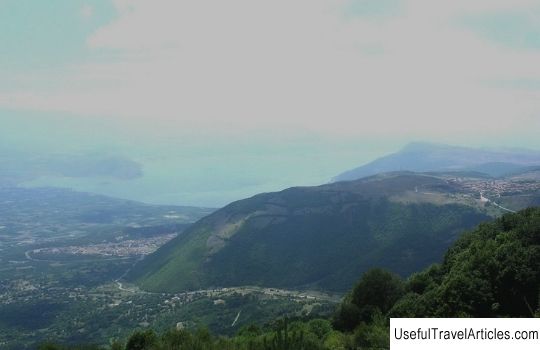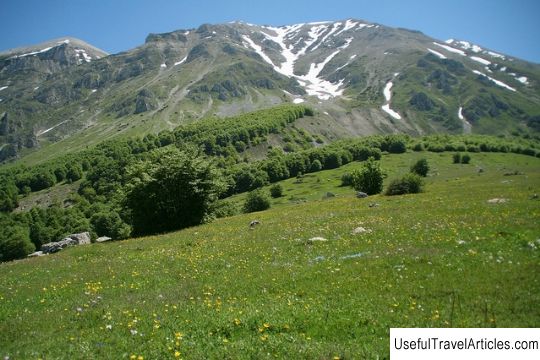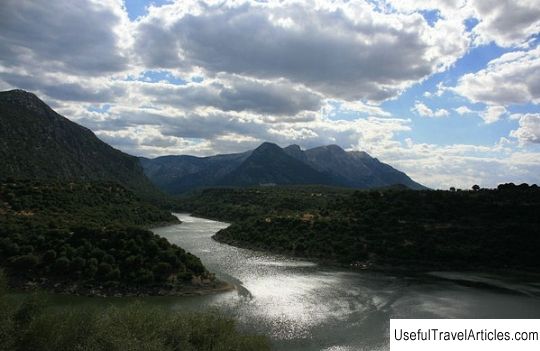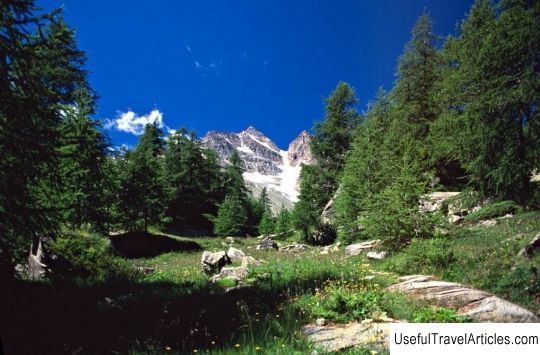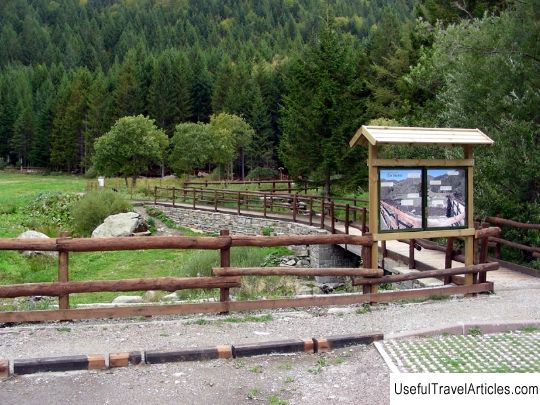National Park Mayella (Parco Nazionale della Majella) description and photos - Italy: Pescara
Rating: 8,0/10 (7690 votes) 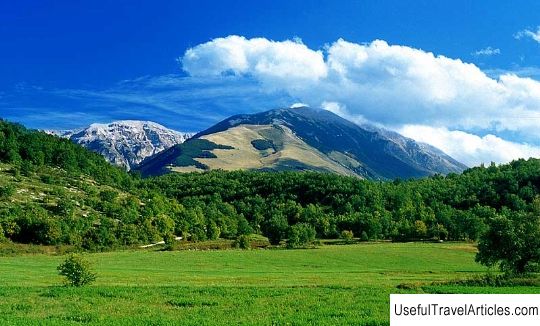
National Park Mayella (Parco Nazionale della Majella) description and photos - Italy: Pescara. Detailed information about the attraction. Description, photographs and a map showing the nearest significant objects. The title in English is Parco Nazionale della Majella. Photo and descriptionMayella National Park is one of the most relatively young protected natural areas in Italy. It was created in 1993 and spreads over an area of 86 thousand hectares in the provinces of Pescara, Chieti and L'Aquila in the Italian region of Abruzzo. Sheer mountain slopes, deep valleys and canyons, combined with vast plateaus, are home to a huge number of species of flora and fauna - about 45% of the total species diversity of Italy lives here! More than half of the territory of the national park - 55% - lies at an altitude of over 2 thousand meters above sea level. Mountain peaks are visible everywhere - the main one is called Monte Amaro and rises up to 2793 meters (this is the second highest peak in the Italian Apennines). The local mountain ranges are characterized by deep picturesque valleys - Vallone del Orfento, Valle del Foro, Vallone del Selvaromana, Valle delle Mandrelle, Valle di Santo Spirito and Vallone di Taranta. The most famous gorge is the Grotta del Cavallone. The main rivers of the park are called Orta and Foro - these and other streams form numerous waterfalls that adorn rocky landscapes. Legend has it that the name of the park - Mayella - comes from the name of the goddess Maya, a rude and domineering woman who, however, loved her children immensely and spent years looking for her only son. It was here, in these mountains, that Maya died. According to another version, the word Mayella comes from the local name of the broom - mayo, which paints the mountains and valleys in a golden color during the flowering period. It is believed that the first inhabitants of Mayella were the tribes of hunters and gatherers who lived here about 800 thousand years ago. Later, agriculture, forestry and cattle breeding began to develop in the park. People began to build monasteries and temples here - San Clemente in Casauria, San Liberator and San Salvatore in Mayella, San Tommaso in Paterno and others. Separate secluded hermitages have also survived - Sant Onofrio di Serramonosca, Santo Spirito, San Bartolomeo di Leggio, Sant Onofrio al Morrone and San Giovanni al Orfento. Numerous monuments of history and architecture have come down to us - churches, castles, rock paintings, etc. As for the wildlife of the park, it is unusually diverse. Among those who have found refuge here are chamois, red deer and roe deer. Once upon a time, these animals lived in abundance throughout Abruzzo, along with wolves and brown bears. However, uncontrolled and thoughtless human activity has put them on the brink of extinction. It was only thanks to the timely intervention of nature conservation organizations that it was possible to save many species that today feel at ease on the territory of Mayella. There are otters, wild cats, ferrets, various reptiles and amphibians and over 130 bird species! A recent flora census showed that the park is home to over 1,800 plant species that represent the Mediterranean, Alpine, Balkan, Pyrenean and even Arctic flora. On the mountain slopes and valley bottoms, you can see oaks, maples, beeches, yews, birches, mountain ash, blueberries, white ash and holly. The most characteristic plant in the park is the Italian black pine, which can be found in the most inaccessible places like Cima della Stretta, Vallone di Macchialunga and Valle d'Orfento. There are several visitor centers throughout the national park. In Paolo Barrasso, for example, there is a museum, one section of which is devoted to the natural aspects of Mayella, and the other to the archaeological finds made here. The Fara San Martino Visitor Center also hosts a museum, whose exhibitions are designed for people with disabilities - its audio and video materials reproduce sounds and pictures of nature. And in the center of Lama dei Peligny there is a history section and a section dedicated exclusively to chamois. Also on the territory of the park there is a wildlife conservation center, mainly dealing with otters, a botanical garden with aviaries, a reconstructed Neolithic village and a herbarium.        We also recommend reading Parish Church of St. Anthony (Pfarrkirche hl. Antonius) description and photos - Austria: St. Anton Topic: National Park Mayella (Parco Nazionale della Majella) description and photos - Italy: Pescara. |
